Hands On With the Samsung Galaxy Note 5 and Samsung Galaxy S6 edge+
by Joshua Ho on August 13, 2015 11:00 AM EST- Posted in
- Smartphones
- Samsung
- Galaxy
- Mobile
- Galaxy Note 5
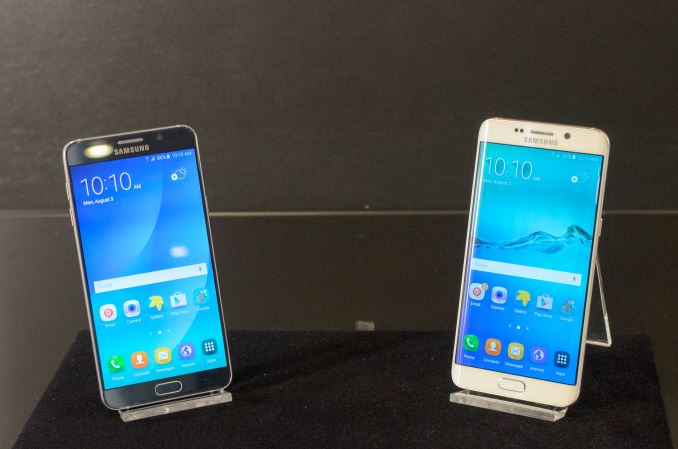
Today, Samsung is announcing the next generation of their Galaxy-brand phablets, the Galaxy Note 5 and the Galaxy S6 edge+. Samsung’s phablets have been one of their greatest smartphone success stories, finding traction in a market when many thought there wouldn’t be a place for such a large phone. And while you will never see some competitors directly admit to it, products like the Note series have legitimized the phablet form factor and required that the competition catch up as well, making the phablet form factor as much of a home court for Samsung as there can be.
Starting with their 2014 models, Samsung introduced two different phablets, the Galaxy Note 4 and the simply titled Galaxy Note Edge. This year Samsung is retaining the dual phablet approach, however in the case of the Edge product Samsung has shifted gears on what they want to do. For 2015 Samsung seems to be going after a new audience in the form of the Galaxy S6 edge+, which is a more distinct derivative of the Note 5 platform with some greater feature changes than just a curved screen. To try and explain what I mean, I’ve included the specs below.
Galaxy S6 edge+ |
Galaxy Note 5 |
|
| SoC | Samsung LSI Exynos 7420 4xA57 @ 2.1GHz 4xA53 @ 1.5GHz |
Samsung LSI Exynos 7420 4xA57 @ 2.1GHz 4xA53 @ 1.5GHz |
| GPU | Mali T760MP8 @ 772MHz | Mali T760MP8 @ 772MHz |
| RAM | 4GB LPDDR4 | 4GB LPDDR4 |
| NAND | 32/64GB UFS 2.0 | 32/64/128GB UFS 2.0 |
| Display | 5.7-inch 2560x1440 SAMOLED Dual edge display |
5.7-inch 2560x1440 SAMOLED |
| Network | 2G / 3G / 4G UE Category 6/9 LTE |
2G / 3G / 4G UE Category 6/9 LTE |
| Dimensions | 154.4 x 75.8 x 6.9 mm 153 grams |
153.2 x 76.1 x 7.6 mm 171 grams |
| Camera | 16MP rear camera, 1.12 µm pixels, 1/2.6" CMOS size, F/1.9. OIS 5MP F/1.9 FFC |
16MP rear camera, 1.12µm pixels, 1/2.6" CMOS size F/1.9, OIS 5MP F/1.9 FFC |
| Battery | 3000 mAh (11.55 Wh) non-removable |
3000 mAh (11.55 Wh) non-removable |
| OS | Android 5.1 with TouchWiz (At launch) | Android 5.1 with TouchWiz (At launch) |
| Connectivity | 2x2 802.11a/b/g/n/ac + BT 4.2, USB2.0, GPS/GNSS, NFC | 2x2 802.11a/b/g/n/ac + BT 4.2, USB2.0, GPS/GNSS, NFC |
| SIM Size | NanoSIM | NanoSIM |
As one can see, the Galaxy Note 5 and Galaxy S6 edge+ share a lot in common. They have the same SoC, same amount of DRAM, almost identical displays, the same cameras, fingerprint scanners, and the same battery. Ultimately what differs between the two devices is not the underlying hardware, but the functionality and form factor of the devices.
There are really two important differences between the two, namely the removal of the S-Pen and addition of the curved display to the Galaxy S6 edge+. The result is that while the Galaxy Note 5 is a traditional Note phablet, the Galaxy S6 edge+ is closer to a very large Galaxy S6 edge, and this is why these two closely related devices are placed in very different product lines. In some ways, I suspect that this will be a litmus test for the S-Pen functionality in general, as sales may prove Note functionality has a relatively small effect on the desirability of a phablet.
Design
Moving past the distinction between the two models, the Galaxy Note 5 and Galaxy S6 edge+ share very similar industrial and material design. The bezel surrounding the display and the back cover both continue to use the highly reflective patterning that we first saw with the Galaxy S6, and in the case of the Galaxy Note 5 the bezel surrounding the display has become even thinner than before. Like the Galaxy S6 edge, the plus variant has bezels that are effectively equivalent to the Galaxy Note 5 as the angle reduces the effective size of the technically larger bezel.
With the Galaxy S6, there was a noticeable distinction between the normal version and the edge variant when it came to in-hand feel as the standard version was significantly thicker on the left and right sides of the phone. With the Galaxy Note 5, this difference is lessened, but the difference in in-hand comfort definitely remains. The big driver for this is the use of 3D glass on the back cover of the Galaxy Note 5, which allows for a more ergonomic design in the hand. I can’t help but compare this to the first phablet that I’ve seen with a 3D glass back cover, namely the Xiaomi Mi Note line, which feels remarkably similar. At any rate, the Note 5 seems to remain more ergonomic than the edge variant, which has a flat back but a curved display.
S-Pen
One of the major updates changes to the Galaxy Note 5 is improvements on the S-Pen, which has a number of new changes to the design and software functionality. On the hardware side, the pen itself now has a changed mechanism that has a push button top that allows the pen to be completely flush inside the phone when not in use, but easily ejected by pushing on the top of the pen to make it protrude. The digitizer also has dramatically reduced latency. In my experience, this helps a lot with making writing more natural on the Note 5 as I don’t hesitate as much while waiting for the input to catch up.
On the software side, Samsung has added a host of notable additions to extend the functionality of the S-Pen, namely PDF annotation, an Air command floating button, customizable shortcuts, and scroll capture. PDF annotation sounds exactly like what you might expect, which is the ability to write directly on a PDF and save the results. This has obvious utility in cases like signing documents, as the user experience involved in digitally signing a document is horrific and usually goes something like printing out a PDF, signing the PDF, and scanning the signed document. In the case of the Note 5, signing a document is pretty much as easy as opening the PDF with the right application, writing a signature with the S-Pen, and saving the changes.
Meanwhile the Air command floating button and customizable shortcuts are somewhat more mundane. The floating button just allows for one-tap access to what was previously hidden behind the button press of the pen, and customizable shortcuts in the Air command menu is useful but not exactly life-changing.
Scroll capture is also arguably a “minor” feature, but I would argue that its value is significant when it comes to improving the user experience of the phone. In short, this screenshot mode makes it possible to screenshot a long list in an entire screenshot, so something like Google Maps directions can be taken as a single scrollable screenshot rather than 2-20 screenshots that might have overlapping information and potentially missing information from the ListView. However, as far as I can tell this capture mode is strangely hidden behind S-Pen functionality when it really should be integrated into the existing screenshot capture gestures that programmatically determines whether to present this scroll capture mode.
Camera
Although the camera configuration is unchanged from the Galaxy S6 with an IMX240 or S5K2P2 camera sensor, f/1.9 optics and a 5MP FFC, there are some new and interesting features present in the camera application. One notable additional is improved pro mode, with extended ISO range down to 50 ISO and the addition of a shutter speed toggle for long exposures. However, manual white balance remains unchanged as far as I can tell with only a few presets rather than fine-grained color temperature adjustments. I was unable to get a RAW sample from the device, but it will be interesting to see if Samsung has properly implemented sensor and lens corrections into the RAW files.


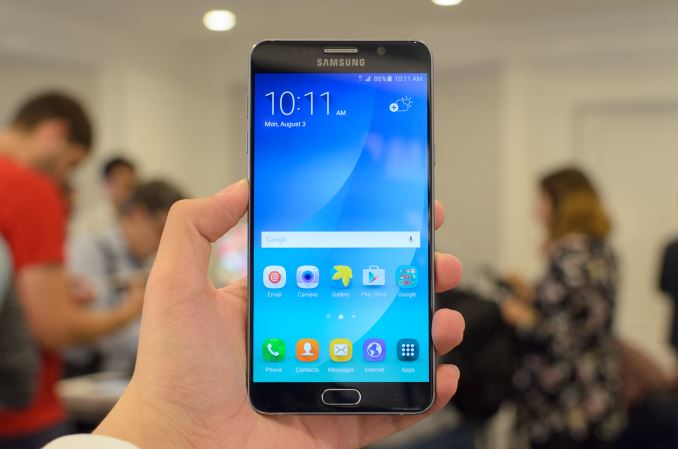
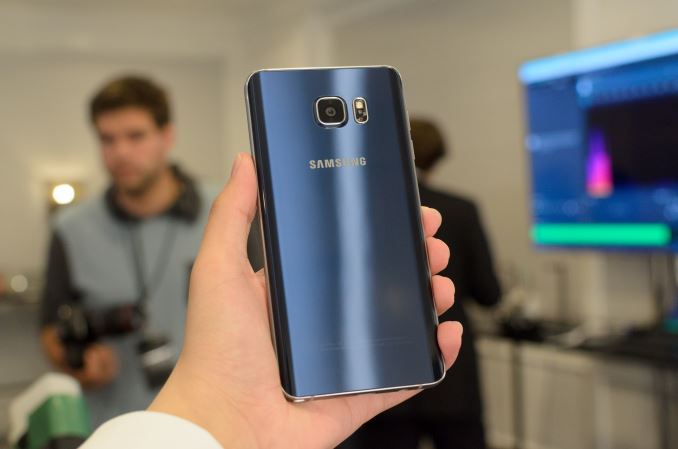
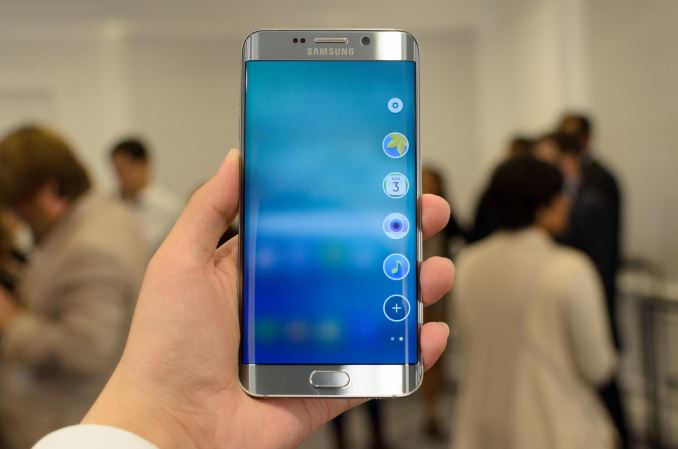
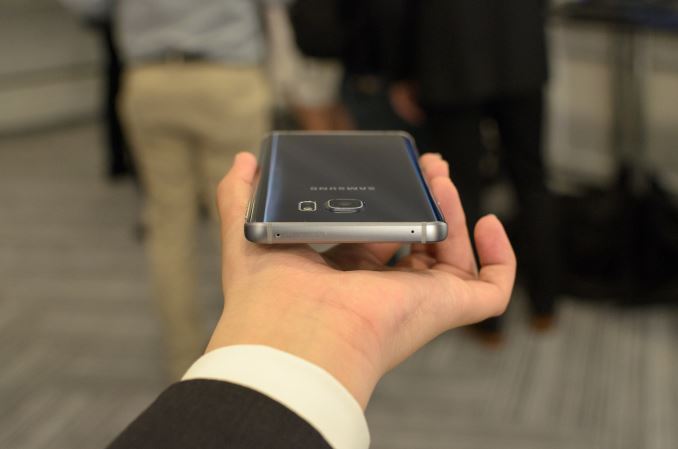

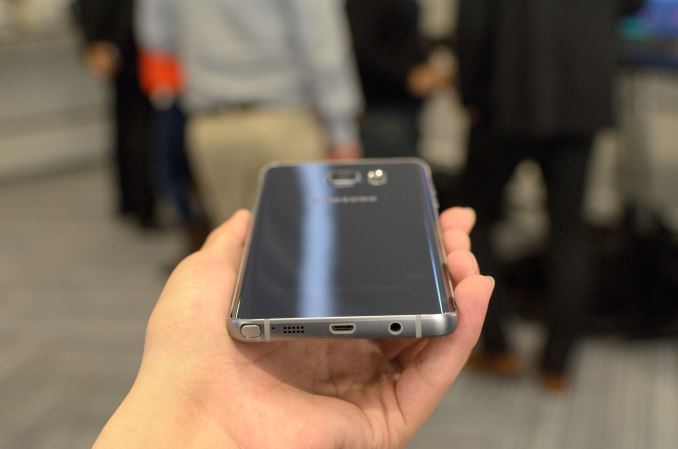
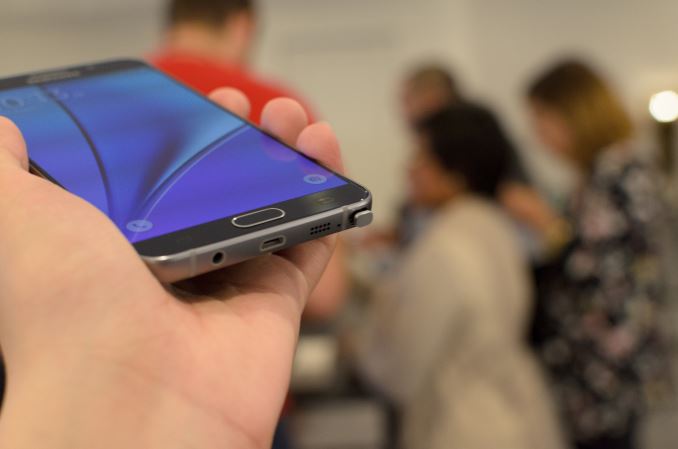
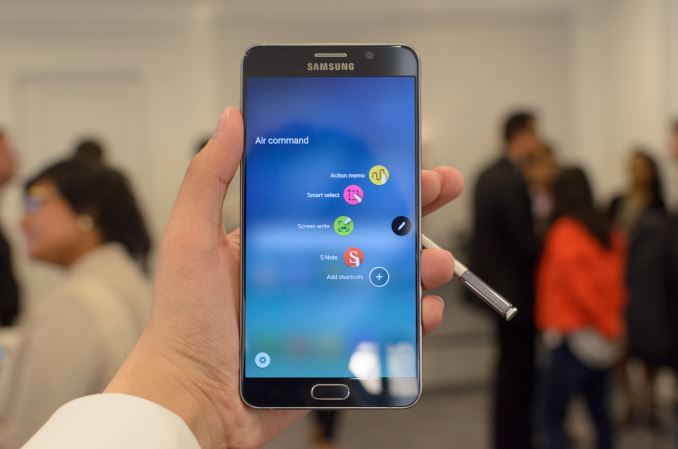
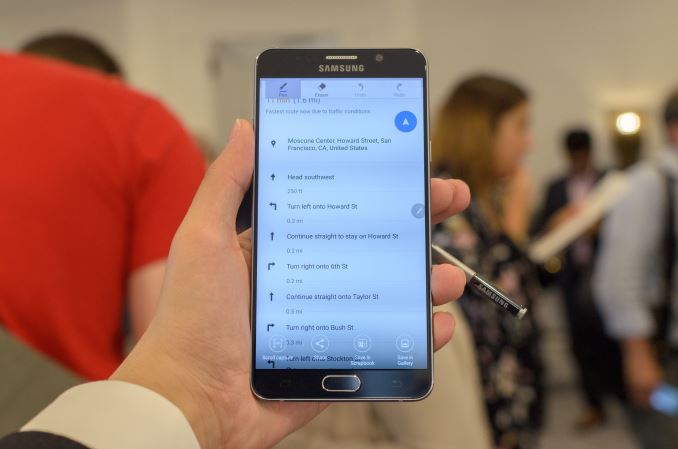
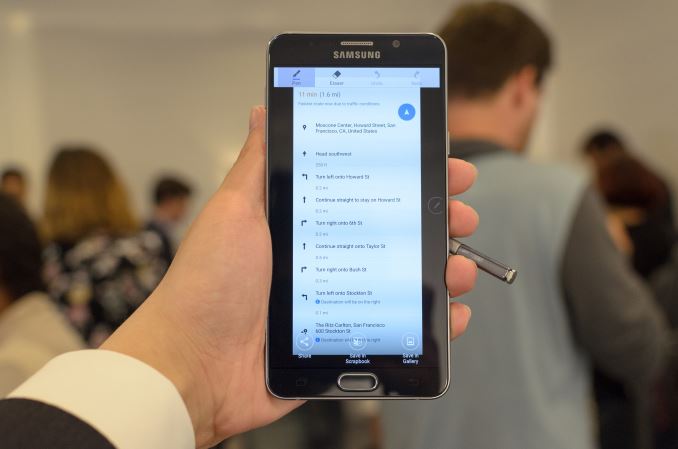


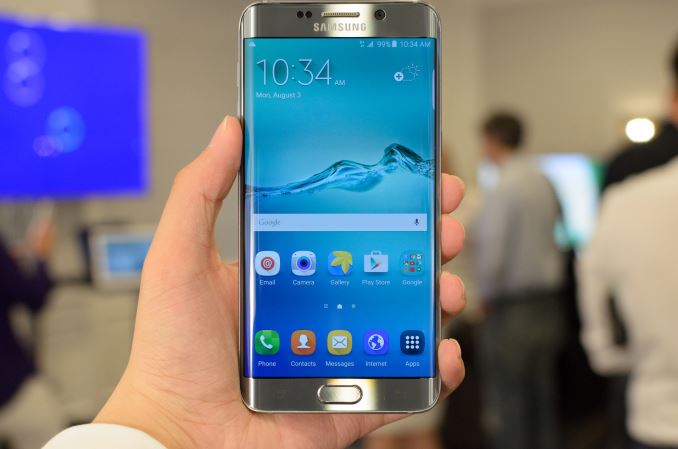
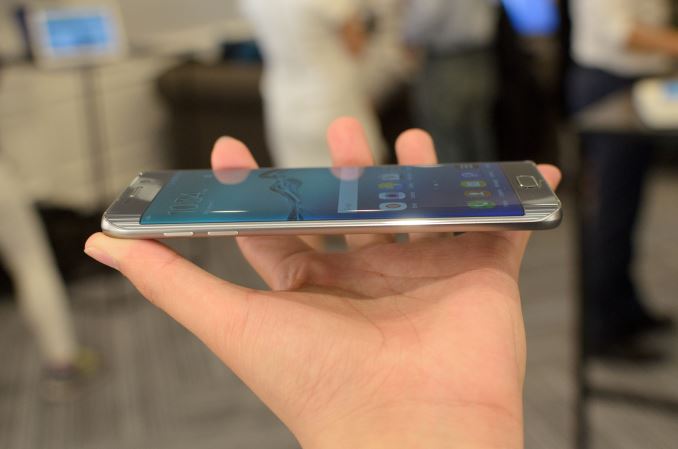
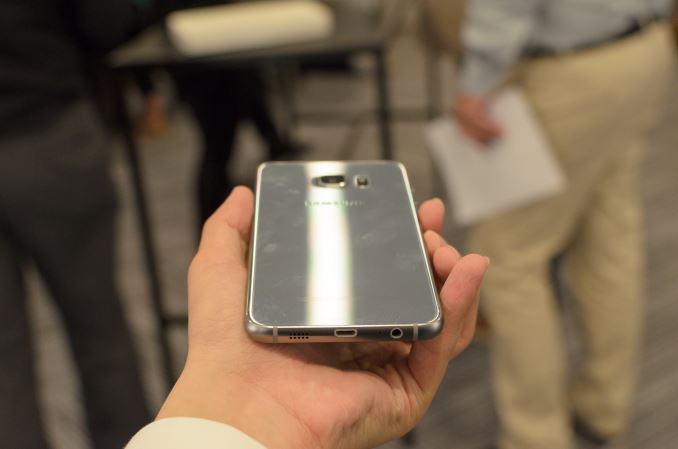
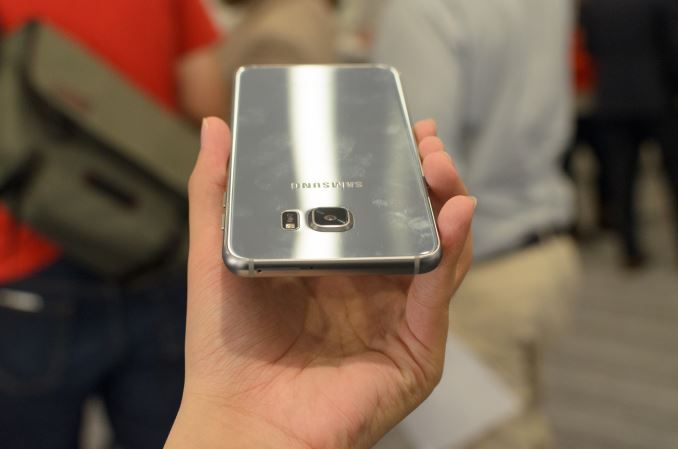
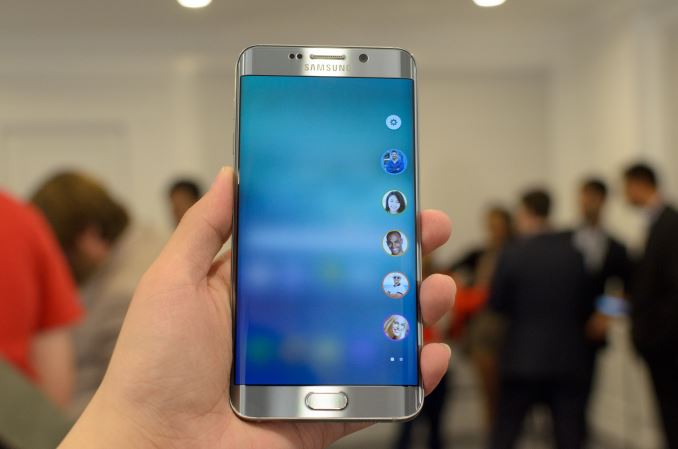








218 Comments
View All Comments
kmmatney - Thursday, August 13, 2015 - link
It's the screen that uses the battery - the transistor size on the cpu doesn't matter all that much. Screens are more power efficient nowadays, but a bigger battery will always help out.Eidigean - Thursday, August 13, 2015 - link
Speaking as a developer, you don't know what you're talking about. I can kill a battery in under an hour if I push the processors too much; however, I can browse the web with the same screen being backlit for several hours on the same battery.lilmoe - Thursday, August 13, 2015 - link
Very true. People are really underestimating the power draw of these newer SoCs.Flagship processors and GPUs, for the past couple of years, are much more power hungry IF they're unnecessarily and constantly pushed to the limits. However, they're also more power efficient if used optimally. The Note 2 had legendary battery life (7-8 hours SoT) because its 32nm SoC was great for the screen resolution (720p) and overall workload. The last flagship from Samsung to have an optimal configuration was the GS5.
Also, Android has been getting less battery friendly as of late. Apps are getting more "visually appealing", with lots of animations and features that use more resources, and I'm afraid Android isn't yet as efficient as it should be with hardware acceleration...
WAR1944 - Thursday, August 13, 2015 - link
As an owner of the Note 4, there are so many reasons that I won't be buying the Note 5. This is not an upgrade worth paying $900 for.ddriver - Thursday, August 13, 2015 - link
I'll be sticking to my Note 3 for the time being as well. No SD card slot and no removable batter == no purchase for me. Removable battery also means easily replaceable battery, battery giving out is the N1 reason why people throw away "old" and buy new phones. I still make 7-8 days of "phone usage" out of my original battery, which I cycle with the 2 extra I bought, so as long as I don't drop and break it, it will be useful for another 3-4 years easily.mkozakewich - Thursday, August 13, 2015 - link
It's really rare that there's a reason to upgrade after only one year. Maybe if you had bought an Apple iPhone S, the next iteration might be enough.halcyon - Friday, August 14, 2015 - link
I was really looking to upgrade my Note 3 to Note 5.What would I get?
- Less space (I'm at 32GB+128GB xdsd)
- Less battery run time (several hours in heavy use, as proven by S6 edge experiences)
- No way to swap the battery
- Really stupid S-pen eject design (IMHO)
- Faster SoC, +1GB RAM, lots of flash speed and good cam upgrade
For $900 and I'd have to import from the US or Asia?
No thanks. Samsung, you lost another customer.
hlovatt - Thursday, August 13, 2015 - link
The sales figures for the S6 and S6 edge seem good compared to S5 and S$, therefore I suspect that Note 5 and S6 edge+ will be better than Note 4. Global sales ranking for **May 2014** were:iPhone 5s, Galaxy S5, Galaxy S4, Note 3, iPhone 5c (http://www.counterpointresearch.com/top10may2014)
For **June 2015** (latest):
iPhone 6, iPhone 6 Plus, Galaxy S6, Galaxy S6 Edge, iPhone 5S (http://www.counterpointresearch.com/apple-iphone-6...
Considering that there are now two different screen sized iPhones to compete against the Galaxy range seems to be doing OK.
Therefore I would suggest that most, though not all, users don't want replaceable batteries or SD cards but do want nice looking metal phones (considering that describes all the current top 5). So you would think that the Note 5 and S6 edge+ will do well and one or the other will replace iPhone 5S in the top 5.
Xenonite - Thursday, August 13, 2015 - link
^This is, sadly, very accurate.I have the Note4 and I absolutely love it, apart from a few main issues:
1) The battery is either totally oversized or the CPU and GPU are not clocked nearly high enough. I run a not insignificant overclock on both the CPU and the GPU (I have the Qualcomm version) and my battery still easily lasts more than 4 hours on a single nightly charge. I can only imagine what would have been possible with a proper metal heatsink to boost the wieght and thickness of the phone, while optimising the SOC for the internal battery size and the maximum safe current it can provide.
2) The PenTile display (yes, yes I know, and I do hold the phone out as far as my arm will go, but sadly my hand can only get to about 1.4m from my face so the grainy, leaky subpixel appearance is still quite bad on any kind of solid or smoothly gradiated colour).
3) Its really just waaaayyy to thin for its planar size (I had to go searching quite far and wide to find a shop with a suitable back-cover replacement that adds at least another 10mm to its thickness to make the phone more comfortable to hold and use).
4) The display has been optimised for a stupidly high amount of light output at the cost of pixel response time (especially in very dark halftones) and colour accuracy. I have never had set my display's brightness above 10% outdoors, in direct sunlight, and I almost always have it set at around 4-5% for normal indoor use, as anything higher is just uncomfortably bright; kind of like staring into one of those high-powered LED torches at close range. :(
Now I wished that at least one of these issues would someday have been addressed with a new Note revision, however it seems that there truely is no hope for any sort of a balanced, thicker z-height or any further display improvements, or indeed, any sort of improvement in the most critical areas of the Note4's performance.
Definitely no sale for me.
ddriver - Friday, August 14, 2015 - link
LOL, your hands are 1.4 meters long and you see "grainy subpixels" on solid colors from that distance... You seriously got me laughing.Perhaps you should wear cryptonite so that you supress your superpowers...
Your entire post makes about zero sense.